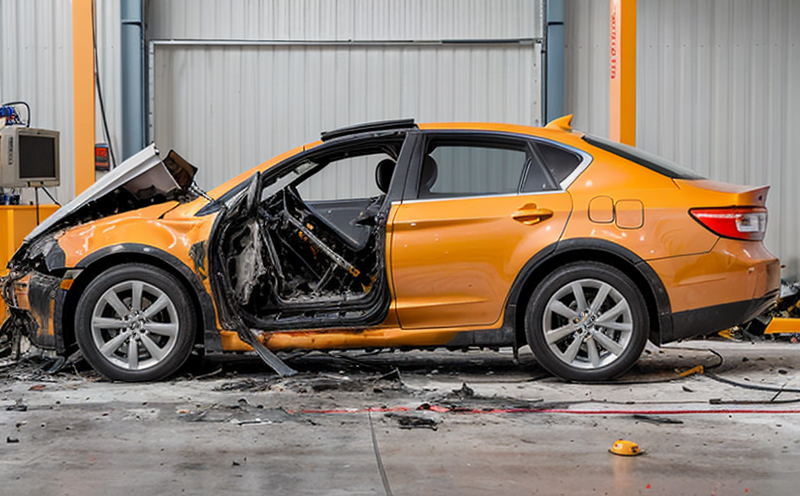IEC 62923-1 Mechanical Abuse Testing of Onboard Marine Battery Systems
The International Electrotechnical Commission (IEC) Standard IEC 62923-1 is a crucial guideline for the mechanical abuse testing of onboard marine battery systems. This standard ensures that these batteries are capable of withstanding real-world stresses and shocks, thereby enhancing safety and reliability in maritime environments.
The test protocol outlined in this standard is designed to simulate various forms of mechanical abuse such as dropping, vibration, impact, and temperature cycling. The primary objective is to verify the structural integrity and operational performance of the battery under these conditions. This ensures that the batteries meet stringent safety standards required by international maritime regulations.
The testing procedure involves subjecting the battery to specific drop tests from different heights and angles. Vibration tests are conducted using controlled frequency ranges to simulate shipboard environments where vibrations occur due to engine operation, waves, and other factors. Impact tests assess how well the battery can withstand sudden impacts that may arise during accidents or harsh operational conditions.
Temperature cycling is another critical aspect of this testing protocol. It helps in determining whether the battery can function correctly even after undergoing significant temperature changes. This reflects real-world scenarios where batteries might be exposed to extreme temperatures, especially in tropical and polar regions.
The testing process also includes a series of operational tests to ensure that the battery continues to perform its intended functions post-abuse. These include checking for any leakage, short-circuiting, or other potential hazards that could arise from mechanical abuse. The results of these tests are meticulously documented and compared against predefined acceptance criteria.
Compliance with IEC 62923-1 is not only a requirement for meeting international maritime standards but also an important step towards ensuring the safety and reliability of onboard marine battery systems. This standard plays a pivotal role in protecting both personnel and equipment from potential hazards associated with mechanical abuse.
By adhering to these rigorous testing procedures, manufacturers can gain confidence that their products will perform reliably under challenging conditions. The detailed documentation generated during this process also serves as valuable information for continuous improvement and development of better-performing battery systems.
Benefits
- Ensures compliance with international maritime standards.
- Maintains safety and reliability in harsh environments.
- Reduces risks associated with mechanical abuse.
- Provides valuable data for product improvement and development.
- Simplifies regulatory approval processes.
- Increases marketability of products due to enhanced trustworthiness.
Industry Applications
The application of IEC 62923-1 is primarily focused on the marine industry, where safety and reliability are paramount. This standard ensures that battery systems used in ships, offshore platforms, and other maritime structures undergo thorough testing to withstand various mechanical abuses.
Ships operating in rough seas require batteries that can handle the constant stress of vibrations and impacts. By ensuring compliance with IEC 62923-1, manufacturers can provide reliable power sources for critical shipboard systems such as navigation lights, communication devices, and emergency lighting.
In offshore operations, where conditions are often extreme, these batteries play a crucial role in ensuring the smooth functioning of equipment essential for safety and efficiency. The tests conducted under this standard help guarantee that the battery systems remain operational even after enduring harsh mechanical abuses.
International Acceptance and Recognition
The IEC 62923-1 standard has gained widespread acceptance within the international maritime community. Its recognition is due to its comprehensive approach towards ensuring the safety and reliability of onboard marine battery systems.
Countries around the world have incorporated this standard into their regulatory frameworks to ensure that all batteries used in their maritime sectors meet these stringent requirements. Organizations like the International Maritime Organization (IMO) recommend adherence to IEC 62923-1 as a best practice for enhancing safety standards.
Adherence to this standard not only ensures compliance with international regulations but also demonstrates a commitment to quality and safety, which is highly valued by stakeholders in the marine industry. By meeting these requirements, manufacturers can expand their market reach and build stronger trust among customers worldwide.





